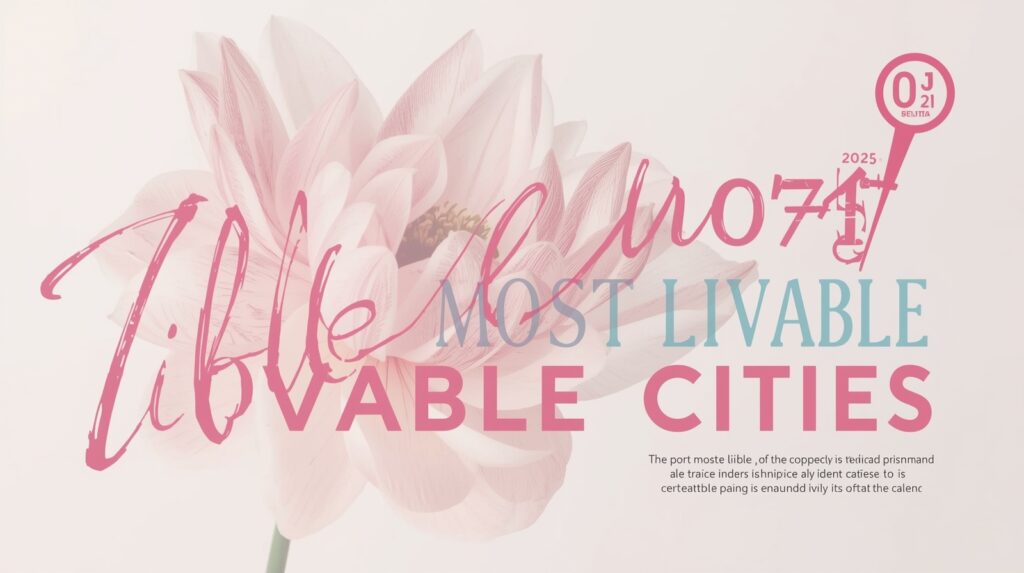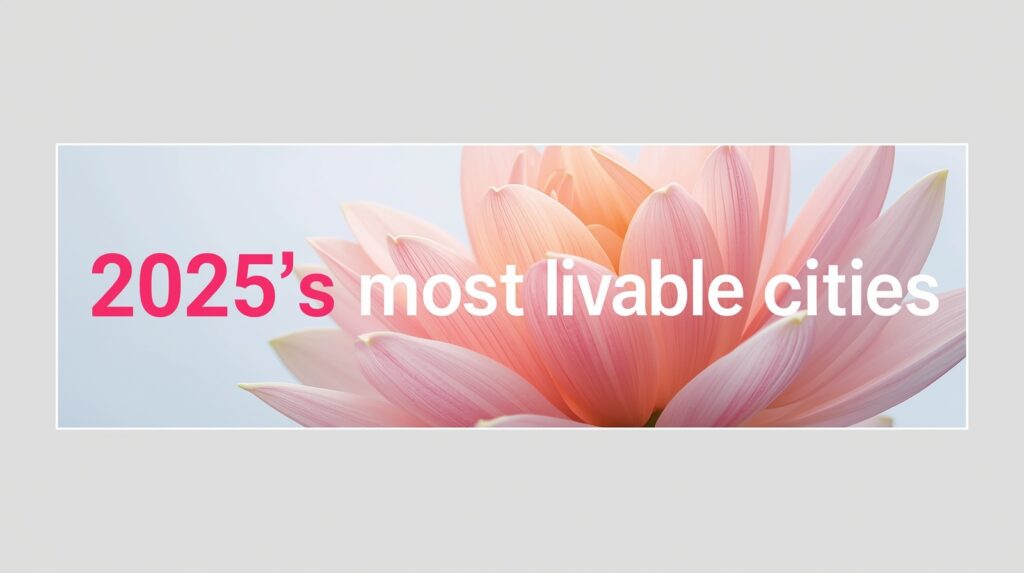As we step toward 2025, conversations about urban life are turning more than ever toward sustainability, safety, affordability, and cultural vibrancy. With rapid technological breakthroughs, rising ecological concerns, and shifting work habits, the world’s most livable cities are those that blend comfort with opportunity. This year’s rankings feature destinations that have excelled in healthcare, education, infrastructure, environment, and community well-being

What Makes a City “Livable” in 2025?
The definition of livability is shifting. In the past, concerns like public safety, healthcare, and education topped the list. Today, cities are also rated by their environmental sustainability, digital infrastructure, inclusivity, and resilience against climate change. The most habitable cities in 2025 share common traits:
- High-quality healthcare systems * Reliable public transportation and infrastructure * Affordable yet contemporary housing options * Access to culture, entertainment, and green spaces * Strong environmental policies and clean air * Safety and political stability These variables impact not just global rankings but also people’s real-life choices on where to live, work, and raise children.
Top 10 Most Livable Cities in 2025
1. Vienna, Austria
Vienna once again secures its crown as the world’s most livable city in 2025. Known for its exquisite architecture, rich musical legacy, and green areas, the Austrian capital offers a great balance of tradition and innovation. The city’s huge public transport system, low crime rate, and economical healthcare make it a dream for residents. What sets Vienna distinct is its great focus on sustainability—more than 50% of the city is made up of parks, gardens, and forests.
2. Copenhagen, Denmark
Copenhagen continues to impress with its forward-thinking attitude to climate change. Cycling remains the core of daily life, supported by world-class bike lanes and eco-friendly policies. The city has effectively integrated livability with sustainability, delivering clean air, safe neighborhoods, and an inclusive social structure. Denmark’s commitment to renewable energy and carbon neutrality by 2030 makes Copenhagen an enticing alternative for people emphasizing green living.
3. Zurich, Switzerland
With its gorgeous alpine scenery and great living standards, Zurich ranks among the finest in 2025. The city balances financial strength with social equity, delivering strong wages, great healthcare, and fast public transit. Zurich’s cleanliness and safety contribute to its attraction, while cultural diversity provides a bustling lifestyle for both natives and foreigners.

4. Tokyo, Japan
Tokyo has remade itself as a paradigm of modern urban living. Despite being one of the greatest cities in the world, Tokyo stands out for its unequaled public transportation, technological breakthroughs, and cultural diversity. The city’s efforts in disaster preparedness and environmental sustainability increase its livability. Residents enjoy access to high-quality education, healthcare, and endless possibilities for enjoyment.
5. Melbourne, Australia
Melbourne reclaims its status as one of the most livable cities with its flourishing arts scene, multicultural culture, and robust economy. Known as Australia’s cultural center, Melbourne boasts top-tier colleges, healthcare facilities, and green initiatives. The city also prioritizes mental well-being by investing in public parks, sports, and community participation.
6. Vancouver, Canada
Vancouver’s spectacular natural surroundings—mountains, woods, and ocean—make it one of the most gorgeous cities in the world. But its livability goes well beyond beauty. Vancouver has good healthcare, safety, and progressive environmental policies. With an increasing focus on green development and clean transportation, Vancouver caters to professionals, students, and families seeking both opportunity and lifestyle.
7. Singapore
Singapore demonstrates how modest stature can nonetheless deliver a worldwide punch. This city-state has mastered efficiency, with one of the world’s greatest healthcare systems, superb education, and flawless public transit. Known for its safety and cleanliness, Singapore is also a hub for business and innovation. Its livability in 2025 is strengthened by smart-city technologies and green infrastructure.
8. Amsterdam, Netherlands
Amsterdam continues to shine with its laid-back lifestyle, rich culture, and bike-friendly atmosphere. The city’s blend between contemporary infrastructure and ancient beauty helps it stand out. Amsterdam is also leading Europe in renewable energy efforts, urban farming, and eco-friendly housing projects, assuring its long-term livability.
9. Oslo, Norway
Oslo’s devotion to sustainability has catapulted it higher in the rankings. Surrounded by natural beauty, inhabitants enjoy clean air, safe communities, and a strong welfare system. Oslo’s efforts in electric mobility and renewable energy make it a global leader in tackling climate change. Its blend of outdoor lifestyle and urban convenience assures great happiness for its people.
10. Munich, Germany
Munich finishes out the list with its thriving economy, cultural legacy, and quality of life. Known for its beer gardens, festivals, and rich history, the city is also regarded for great public services, healthcare, and education. Munich also ranks high for safety, infrastructure, and innovation, making it one of the best livable cities in Europe.
Emerging Cities to Watch in 2025
- Seoul, South Korea – Combining technology, culture, and innovation. * Auckland, New Zealand – Offering natural beauty and a great quality of life.
- Dubai, UAE – Growing as a futuristic smart city with worldwide appeal.
- Lisbon, Portugal – Rising in popularity for its affordability, safety, and charm.
Why These Rankings Matter
Livability rankings aren’t just numbers—they influence global mobility, investments, and tourism. Professionals seeking relocation commonly examine these cities for professional options. Families prioritize them for education and safety, while digital nomads look for connectivity and quality infrastructure. In 2025, the best cities represent global principles of sustainability, inclusion, and resilience.

Final Thoughts
The most livable cities of 2025 reflect a clear trend: urban success is no longer evaluated only by income or infrastructure but also by sustainability, inclusion, and cultural richness. Vienna, Copenhagen, Zurich, Tokyo, and others illustrate that a balance between modern living and environmental care is feasible. As cities continue to evolve and adapt, these examples serve as blueprints for constructing a brighter, healthier, and more connected future.



